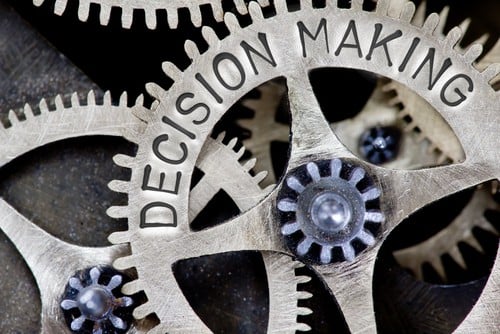- in Blog , Leadership , Learning , Management , Organisational Change , Organisational Development , Research by David Wilkinson
- |
- 1 comments
The counter-intuitive side of evidence-based practice

What is evidence-based decision-making? It may not be what you think? The counter-intuitive side of evidence-based practice.
Opinion-based decisions
When people make decisions about things on a daily basis, for example, what eat or what to wear, they usually do so based on their own opinions, likes, dislikes, personal taste, habits and a range of other criteria which stems from from their experience as well as recommendations from friends and other influences.
This is fine if the results of those decisions only effect the individual or their immediate friends or relations. The cost of getting a decision wrong at this level is usually a sandwich we don’t like or a pair of shoes that hurt or an argument. These are what is known as opinion based decisions.
As stated above their decisions and choices are largely based on the individuals’ own their likes, dislikes, values, beliefs, emotions and habits which drive and at the same time are often a result of their own subjective and idiosyncratic experiences of the world.
What we find is that many people including leaders, managers and employees fail to make a distinction between the self-oriented decisions which abound in their personal lives, and group, team or organisational decisions in their work environment. In effect they don’t shift their decision-making habits from opinion-based decisions to more evidence-based decisions.
The counter-intuitive side of evidence-based decisions
This does not mean that the opposite of an opinion-based decision – the evidence-based decision is just to find evidence to support your decision.
An evidence-based decision is one where people try to put aside their own opinions, likes, dislikes, personal tastes, habits of thinkings, values, beliefs and emotions, and look for evidence, not to support their decision, but rather for evidence against their decision.
The problem with looking for evidence to support a decision is that we are human and very likely to filter and deny evidence that doesn’t support our views. The true evidence-based practitioner turns things around. They treat a decision like a hypothesis and then look for evidence that the decision is wrong. The problem is it is very easy to be convinced by something, especially if it fits our views and make the evidence fit the decision. It is called conformation bias and everyone does it. The only way around this is to arrive at a decision and then hunt out the evidence that doesn’t support that decision and then adjust the decision until you are at a place where the evidence against the decision is either minimal or has the least noxious consequences.
Side effects
Which brings me to the next principle of evidence-based practice – there are no side-effect free decisions or perfect solutions. If you think you have the perfect solution you, most likely, have missed something. More about this in my next post.
Cycles of evidence searching
In actual practice what tends to happen is that we cycle the evidence search. First looking for the evidence (different from data – see here) that builds our argument or position/decision. Then in phase 2 we then search for as much evidence as we can that suggests tat this is not the right course of action and then readjust the argument to accommodate the counter evidence. This occurs in a series of iterative or repeated steps until you have a position that is tenable and where you can live with the consequences. The advantage of this approach is that at least you will know what the likely consequences will be and that you can afford them. Reducing unintended and unaffordable consequences is a big part of evidence based practice.
Other articles in this series:
- Evidence-based practice makes people more flexible and adaptable
- What’s the difference between data and evidence? Evidence-based practice
- Making evidence-based practice work: The 3 key challenges
- Research for Evidence Based Practice and Credibility
Be impressively well informed

Get the very latest research intelligence briefings, video research briefings, infographics and more sent direct to you as they are published
Be the most impressively well-informed and up-to-date person around...



2incongruous